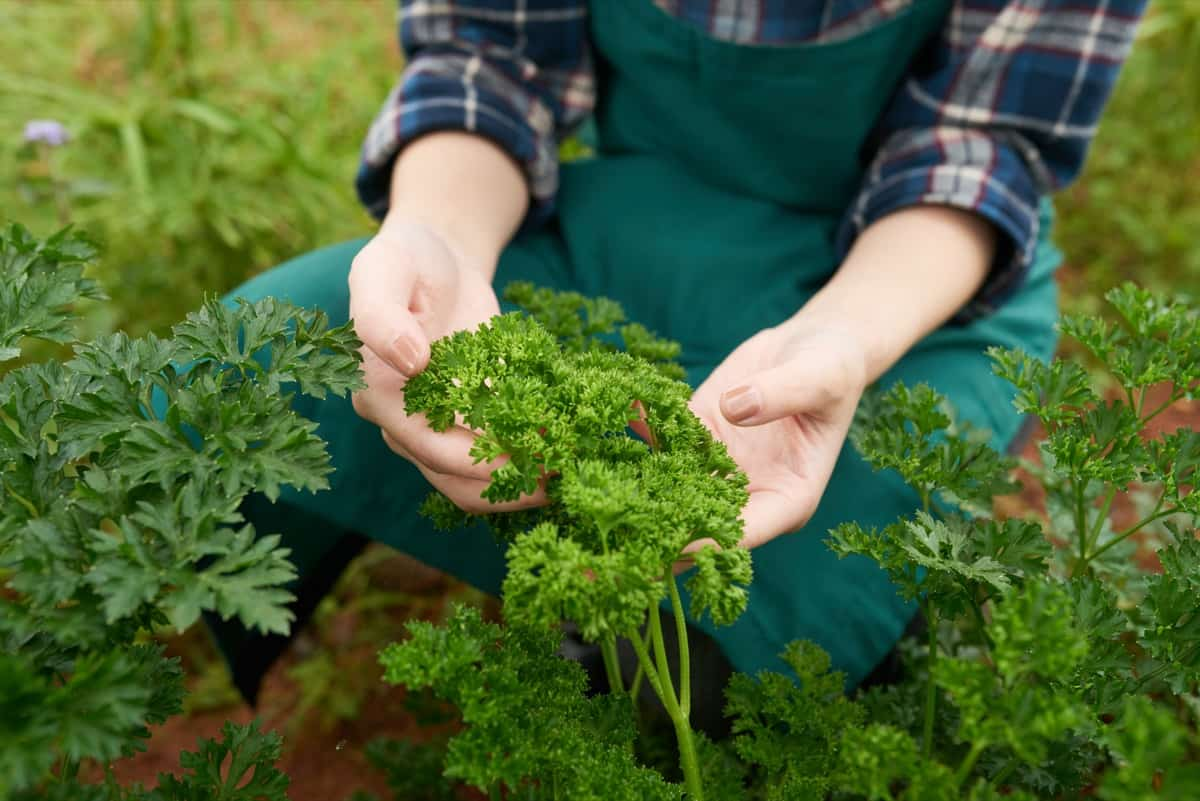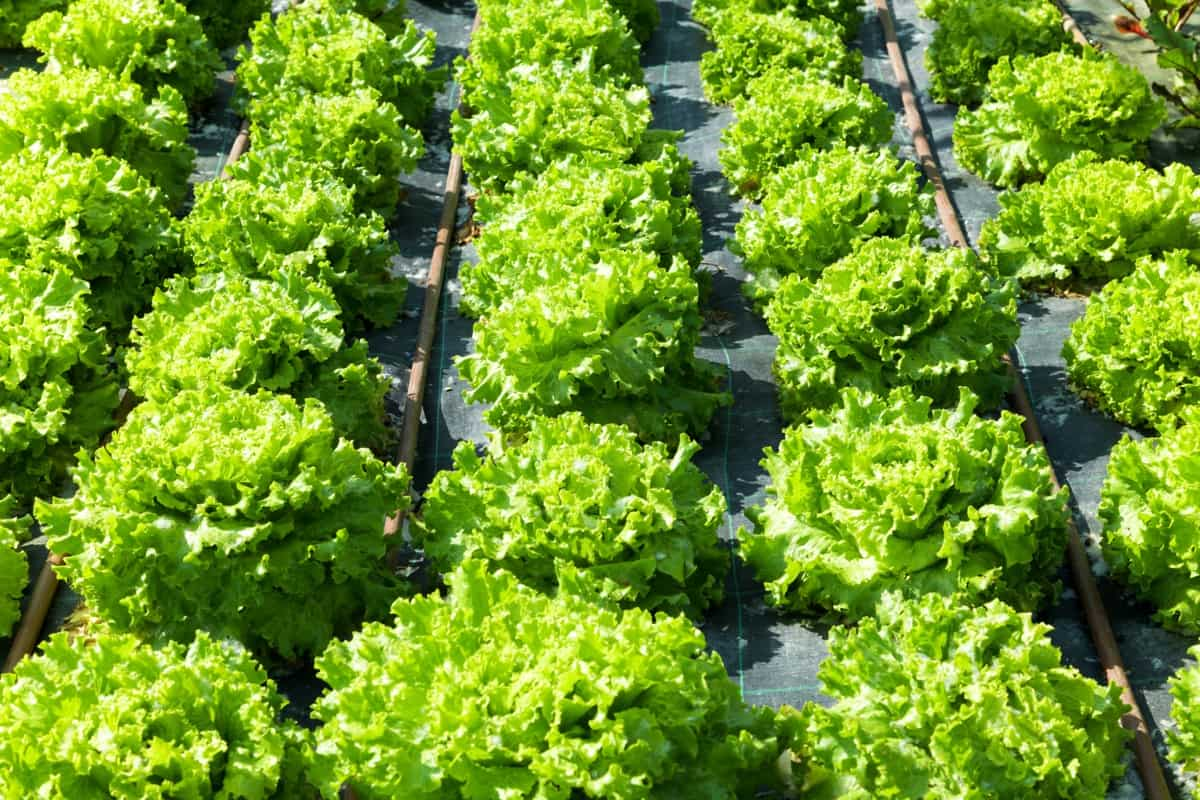Growing leafy green vegetables can be enjoyable and beneficial. Nevertheless, watching leafy green vegetables suffer and die can be painful. Leafy green vegetables cannot be kept alive and healthy for long if you have trouble keeping them alive. This article explains why your leafy green vegetable plants may be dying.

7 Causes of Dying Leafy Greens
Not Enough or Too Much Water
Plants primarily take up water through their roots. Water is essential for plants, but not too much is also harmful. Insufficient water causes plant cells to dry out and die, eventually killing the whole plant. A plant’s roots can suffocate if there is too much water around them because they need some air around them to absorb nutrients.
Without air, the roots will rot. Pests like slugs and snails might be attracted to saturated soil. In contrast, too much water can also cause mold and mildew. Ensure your plants get enough water and you have an easy way to water them consistently.
Temperature
Plants also die when the temperature is too high or too low. Temperatures may be too hot, cold, or fluctuate too much, which isn’t good for seedlings. Some plants are picky about what temperature they need to grow; if they don’t get the right temperature, they will become weak or die. When plants are too cold, the edges of their leaves turn brown.
Too much heat can cause plants to wilt or curl their leaves. Find the ideal temperature for your particular plants to fix temperature problems. If you want to provide suitable temperatures for your plants, you should heat up or cool down the area where they are kept.
Not Enough or Too Much Fertilizer
Nutrient deficiencies are usually quite obvious. Plants will either grow poorly and be stunted, or their leaves will show visible color changes. In addition, stressed plants are more likely to develop diseases and attract pests as they search for food. Commercial farming traditionally uses synthetic chemical fertilizers and continues to do so.
Although these methods produce large harvests, they do have some disadvantages. Plants, roots, and foliage can be burned if these fertilizers are applied at the wrong ratios. When the vegetable plant grows, add compost or fertilizer to the potting soil every month to avoid all these problems. Also, you can use a fertilizer that releases nutrients slowly when you water it. Alternatively, you can spray liquid fertilizer on the plant to release nutrients quickly.
In case you missed it: How to Grow Leafy Greens on Raised Beds: A Step-By-Step Planting Guide for Beginners

Nutrient Deficiencies
It is most likely a nutrient deficiency if the plant’s top leaves are yellowing or have an unusual pattern of yellowing (the veins stay dark while the tissue between them turns yellow).
- Iron deficiency: Interveinal chlorosis, yellowing, and stunted growth are the effects of this condition. New growth will show it first. A pH of less than seven should be maintained in your soil.
- Potassium deficiency: There may be brown spots, yellow edges, yellow veins, or brown veins on the leaves, especially older leaves. Fertilize with potash-containing fertilizers.
- Nitrogen deficiency: As a result, the tips of the leaves become yellow and stunted. There may be yellow veins and pale yellow on the whole leaf. Apply used coffee grounds to increase nitrogen or apply a balanced fertilizer.
- Magnesium deficiency: Yellowing occurs between the veins of the leaves, with the veins remaining green, and usually appears on lower leaves first. Use Epsom salts to treat the soil around the plant.
- Calcium deficiency: Consequently, the leaves will develop crinkles, mottling, or distortions, preventing them from growing their tips. Soil should be amended with agricultural lime.
Disease Problems on Your Plants
Plant diseases are numerous, especially those that affect only food plants. There are, however, certain types of plants that are more vulnerable to disease than others. In some cases, these diseases can completely destroy a crop, but in most cases, they simply reduce the size of harvests. It is important to minimize disease in any case.
Keeping the garden clean is the best way to prevent diseases. Keep dead foliage away from plants, disinfect tools, especially pruners, between uses, and watch for signs of disease. When you see it, prune away the affected foliage to prevent it from spreading to other plants and the rest of the plant. In some cases, removing an entire plant or planting completely, even if it is productive or an entire crop, is necessary to avoid adversely affecting other plants nearby.
Pests Attacking
Pests can kill your potted vegetable plants. Different types of pests need to be watched out for. Here are all the common pests found on vegetables and how to get rid of them. Depending on the pest, the plant’s foliage or roots may be attacked. A large population of these pests can overwhelm the plant, but they are not harmful in small amounts. For potted vegetable plants, checking for signs of pests daily is recommended.
It is quite simple to handle them if you care for them as soon as possible. Make sure the insects on the plant are not harmful before taking action. Insects that are beneficial to the plants should not be killed. If you cannot figure out what the insects are, you can take photos of them and use mobile apps to identify them. Alternatively, you could consult a gardening expert for advice on the type of pest and how to deal with it.
Weeds Outcompeting Your Plants
You must fight weeds to keep your plants healthy, watered, and, most importantly, spaced out. It is common for weeds to be much more resilient to droughts, pests, diseases, and a lack of food. You must maintain weed control around your plants and keep at least a few inches free of weeds.
The weeds will affect your food crops if you don’t control them now. However, weeds benefit gardens because they pull nutrients from deep below the surface. Composting weeds (except those that have already seeded or spread through rhizomes or underground means) is a good idea because it adds nutrients to your compost for use later in your garden or containers.
In case you missed it: Frequently Asked Questions About Growing Lettuce from Seed to Harvest

Conclusion
There was something wrong with your new food garden when your plants suddenly died. When you head out to the garden, remember these reasons. You can harvest healthy, fresh food from your plants if you care for them.
- Feed Your Flock for Less: Top 10 Tips to Save on Chicken Feed
- Ultimate Guide to Ossabaw Island Hog: Breeding, Raising, Diet, and Care
- Hatching Answers: The Top 10 Reasons Your Chickens Aren’t Laying Eggs
- Eggs and Economics: Breaking Down the Cost of Raising Backyard Chickens
- Defend Your Greens: Proven Methods to Keep Iguanas Out of Your Garden
- Ultimate Guide to Cinnamon Queen Chicken: A Comprehensive Guide for Beginners
- Ultimate Guide to California Tan Chicken: Breeding, Raising, Diet, Egg-Production and Care
- Ultimate Guide to Marsh Daisy Chicken: Breeding, Raising, Diet, and Care
- 10 Types of Chicken Farming Businesses You Can Start for Profits